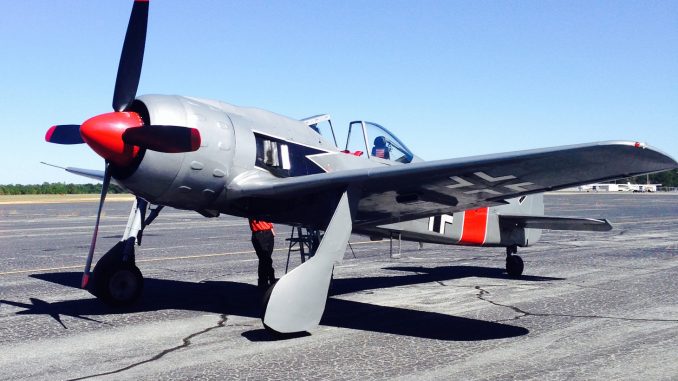
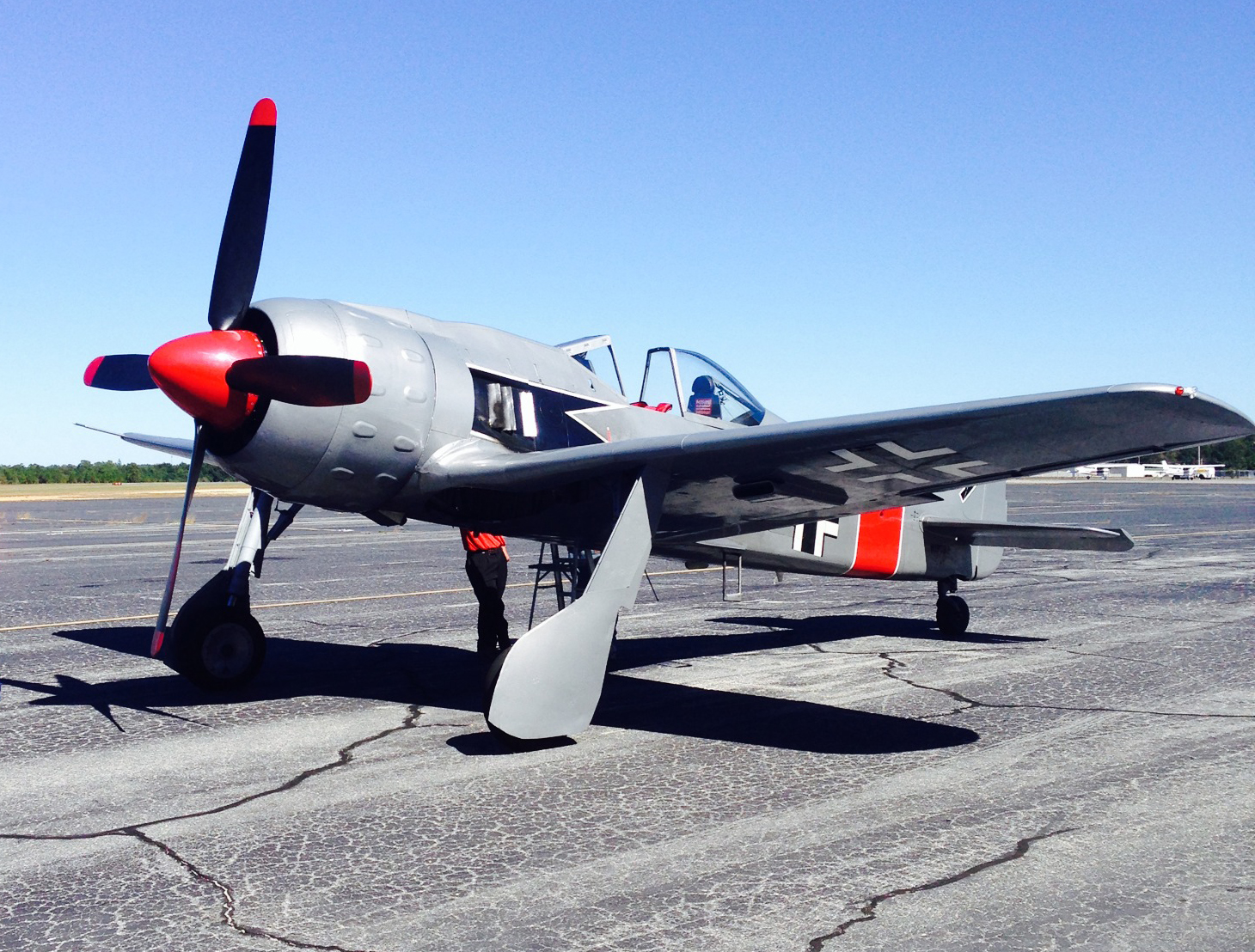
WarbirdsNews has received word that Jerry Yagen’s Military Aviation Museum has acquired another Flugwerk Focke-Wulf FW-190A-8/N
This aircraft was previously owned by Bob Russell of Camden, South Carolina. Some readers may remember that Dave Morss successfully test flew this aircraft in January, 2010. This aircraft was unusual in that Russell fitted it with the four bladed propeller, hub, engine and modified cowling from a Tupolev TU-2 bomber. It gave the aircraft a slightly unusual look, but when viewed from a short distance with the engine running, only an expert could really spot the differences with an authentic Fw-190. The adaptation of the tried and tested Tu-2 engine system actually made a lot of sense when one considered the cooling issues long-associated with the Flugwerk FW-190 replicas, or even the early wartime radial engined Fw-190 variants. The TU-2’s powerplant configuration uses the same ASh-82 engine as most of the other FW-190A-8/Ns currently flying. It is well proven and free from cooling issues.
One problem that did receive notice following the test flights in January, 2010 though was the inadequacy of the drum brakes then fitted to the aircraft. Russell replaced these with Redline disc brake units. Unfortunately, Russell ground-looped the aircraft in a subsequent test flight that April following the installation of the new brakes. Thankfully Russell was able to walk away from the incident, but the aircraft received substantial damage to the landing gear, propeller, wing and most importantly, the wing spar. The repairs were lengthy and expensive.
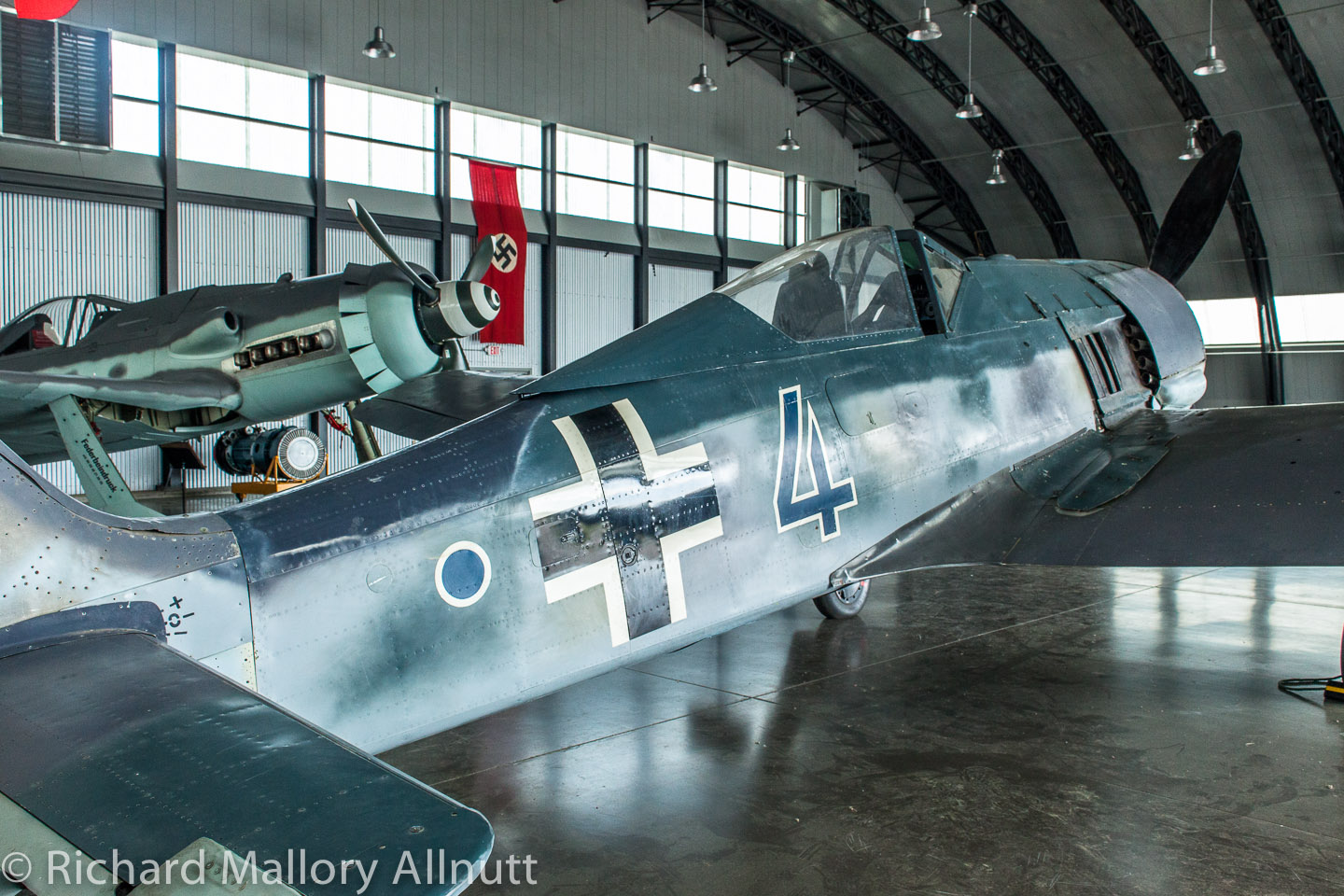
Enter Jerry Yagen: Yagen has a strong association with Luftwaffe aircraft, with a significant number in his fleet. This includes two Fw-190s on display at his Military Aviation Museum in Pungo, Virginia. One of these is a static, radial-engined variant made up of mostly original parts and the other is an un-flown Flugwerk example modified to represent a Fw-190D-9 inline-engined version. Up until the summer of 2013, Yagen also had an airworthy Flugwerk FW-190A-8/N, but, reluctantly, he sold this aircraft to Jack Erickson later that year along with “Chuckie”, his Boeing B-17G Flying Fortress. Yagen deeply regretted that sale, and has been looking to replace the FW-190 ever since. His opportunity arose recently, and he happily made the deal to acquire Bob Russell’s aircraft.
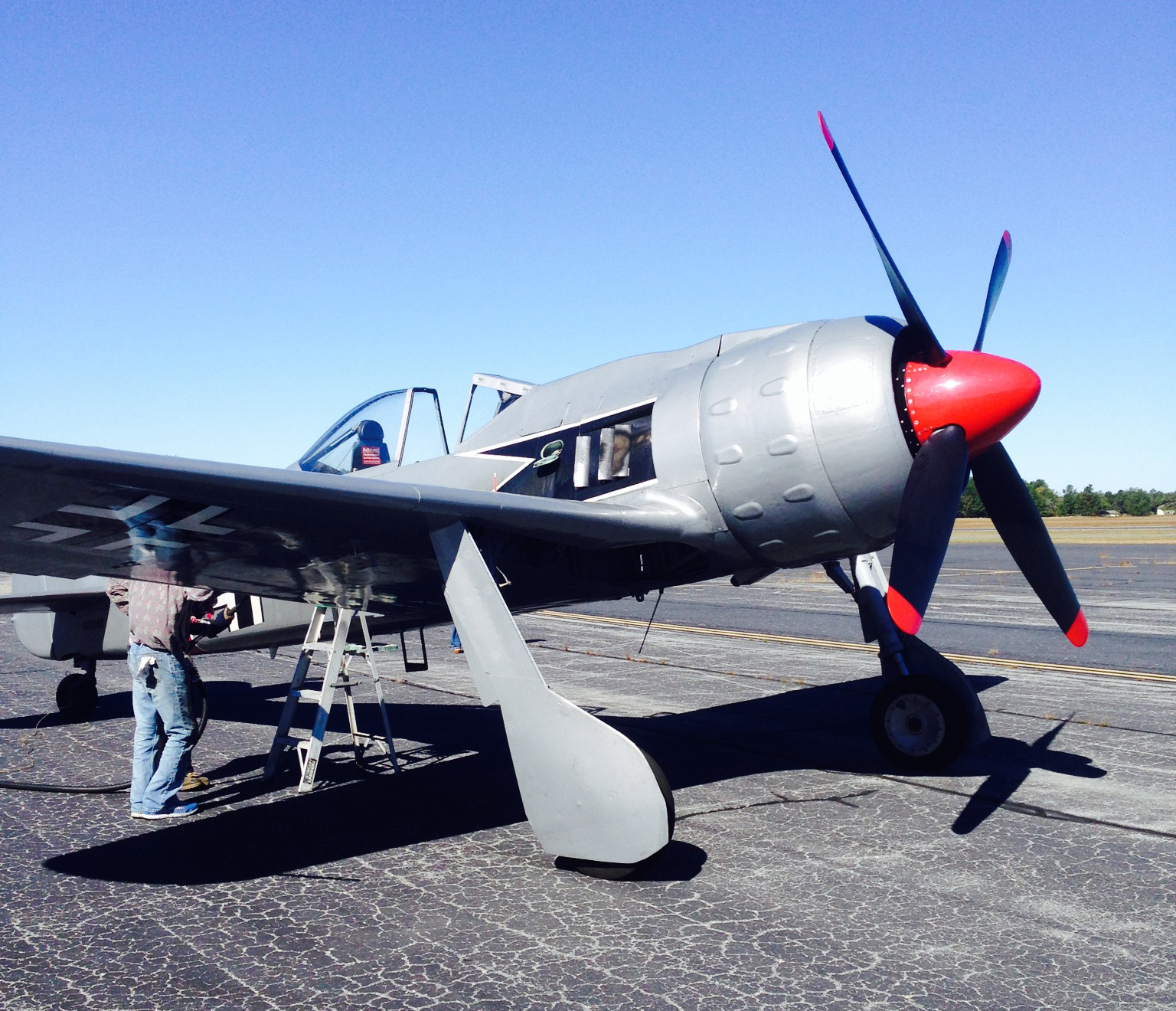
Russell’s aircraft flew again recently, and now has 20 hours on the clock. Mike Spalding, the Military Aviation Museum’s chief pilot, has flown ten of those hours in proving the freshly-rebuilt aircraft. Spalding says that this FW-190 flies even better than their previous, three-bladed example. He thinks that the four blades stabilize the airflow over the tail, which improves handling. The aircraft also has a custom “glass” cockpit with an auto-pilot. It also has a massive 165 gallon fuel tank and can fly at 210knots with a burn rate of just 62 gallons per hour. Spalding loves the aircraft, and personally recommended it to Yagen. He will fly it over to Pungo in the coming week, and it is bound to feature in next year’s Warbirds Over the Beach air show in mid-May at the Military Aviation Museum. Stay tuned!
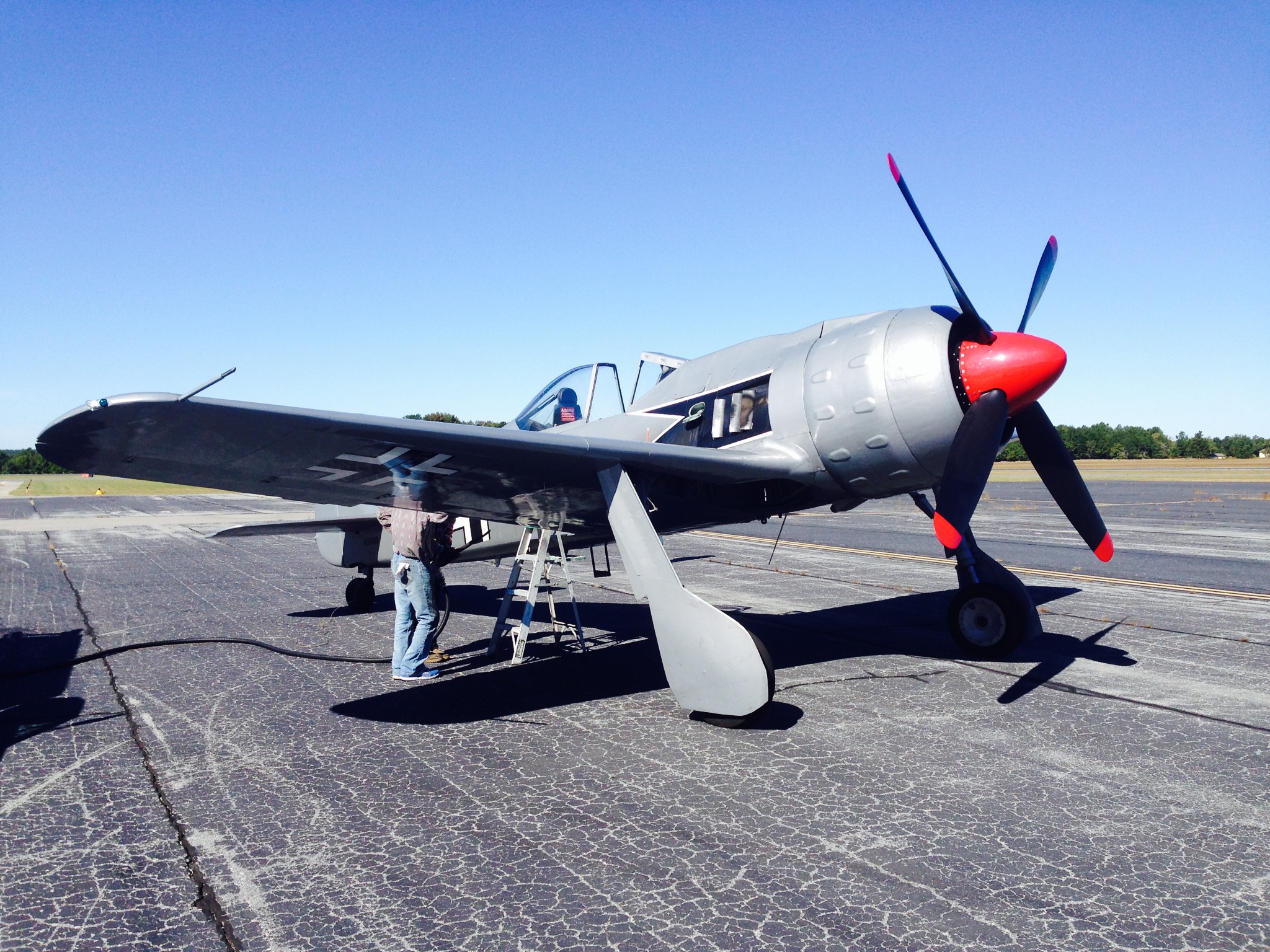



I’m sorry but I can’t for the life of me understand this? Why if one obviously has the funds to purchase one of these incredible machines does one elect to create such a hideous rendition of this elegant warbird? Nothing justifies this ridiculous cowling, propeller and paint job. Nothing! Look at Rudy Frasca’s A-8, or the examples in France, Germany and New Zealand. This is every bit an aeronautical embarrassment of a as Bob Russell’s “cartoonish” Fw-190. Please reconsider this choice.
….the statement of a sad small man who only wishes he could own one… and your obviously not an pilot… he wants to FLY it regularly… not stare at while touching himself… if the aircraft is primarily for flying and not display it’s smart to put in a glass cockpit, long range tanks and any other mods to make it more reliable for regular flying…
Still looking in your mirror Johnny boy….
Absolutely spot on!
Oh God, save us from the experts! Uhhh, ” It’s not yours “. I’d rather see a variety of warbirds as they were; in a variety of colors, &/or patterns. Get yer own, then complain, he didn’t build it for you.